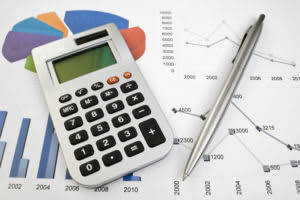Monday – Friday 08:00-17:00
Saturday 08:00-12:00, Sunday-Closed
01388 664097
shop@cre8ivegraphics.co.uk
12 Peel Street
Bishop Auckland

Then, write out the full amount in words on the specified line, extending a line through any unused space to prevent unauthorized additions. In the space provided, clearly write the full name of the payer. Proceed to specify the rental period covered by the payment, Bookkeeping vs. Accounting stating the month and year, like “for the rent of September 2025.” Enter the tenant’s full name.

As receipt books provide pages of blank receipts, it is crucial to understand how to write a receipt or fill out a receipt book in order to ensure that the records are accurate. Filling out a receipt book may seem simple, but doing it correctly ensures your records are organized, professional, and ready for tax season or audits. Follow these seven essential steps to fill out each receipt clearly and completely. Beyond record keeping, using a receipt book also contributes to your professional image. Handing a customer a clean, well-organized receipt shows that you take your business seriously and builds trust in your services. Learn the essential steps to accurately complete and manage your receipt book for reliable financial records.

Most receipt books provide carbon copies, where writing on the top sheet transfers to a duplicate below, allowing the seller to keep a record and the buyer to receive the original. After a money receipt is completed, the original copy is provided to the payer as proof of transaction. This ensures the payer has a tangible record for their own financial management, including expense tracking or dispute resolution. Meanwhile, the carbon copy or duplicate sheet remains in the receipt book, serving as the recipient’s primary record of income. Retaining copies of all rent receipts is a sound practice for both landlords and tenants.

Keeping things tidy not only helps during tax season but also supports better financial planning, smoother audits, and stronger professionalism. Certain scenarios require specific handling when filling out rent receipts. For cash payments, it is important to issue a receipt immediately, clearly marking “Cash” as the payment method, as this provides crucial proof of payment for both parties. It also helps you, the business owner, CARES Act to organize your business receipts. This way, the customer knows exactly what they paid for. Any inconsistencies or inaccuracies must be promptly addressed and rectified to uphold the integrity of the receipt.
Additionally, consider adding security features such as watermarks or holograms to deter counterfeiting or tampering. With your receipts digitized and organized, Nanonets unlocks powerful search functionality. You can now sift through your financial data with ease, categorize receipts by GL codes, or other dimensions, and conduct detailed spend analysis. This comprehensive, real-time data gives you a clear trial balance view of your financial landscape, empowering you to make informed decisions.
This provides them with a tangible record for their own accounting or for any future reference. This keeps your customers’ trust and your business running smoothly. Join over 1 million businesses scanning receipts, creating expense reports, and reclaiming multiple hours every week—with Shoeboxed. Join over 1 million businesses scanning & organizing receipts, creating expense reports and more—with Shoeboxed. You can stuff your receipts into one of our Magic Envelopes (prepaid postage within the US). Use our receipt tracker + receipt scanner app (iPhone, iPad and Android) to snap a picture while on the go.

If you ever need to go back and find a specific transaction, you can use the date to quickly locate the receipt in your book and the number to make sure it’s the correct one. Keeping all the receipts in your book chronologically makes them easy to find. A receipt book does more than just track purchases; it keeps your business in line with legal receipt book how to fill out requirements. Learn how to fill out a receipt book in seven easy steps. Issuing receipts is legally required for providing proof of purchase, recording taxes, and avoiding potential legal consequences for inadequate record-keeping.